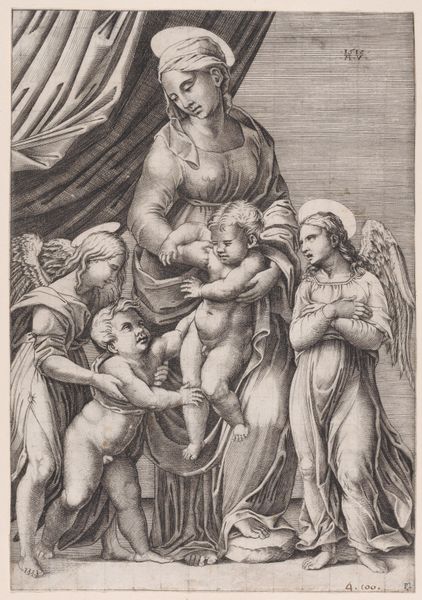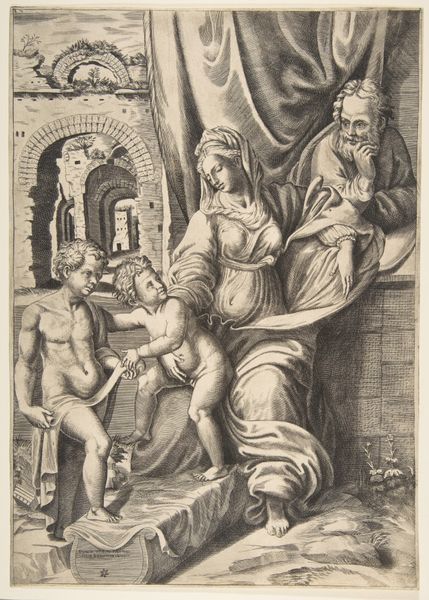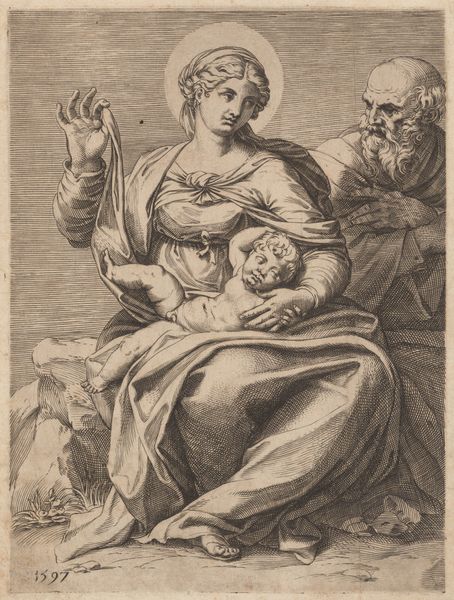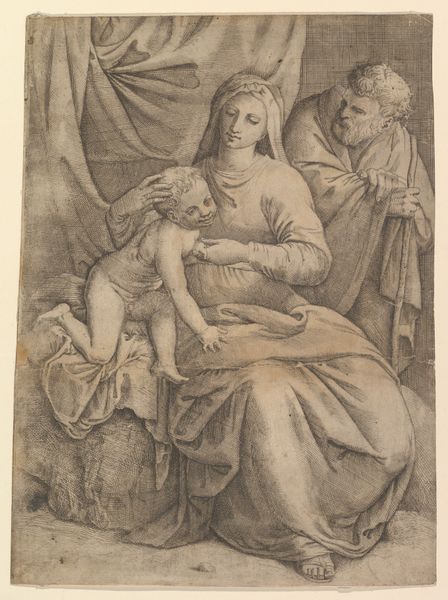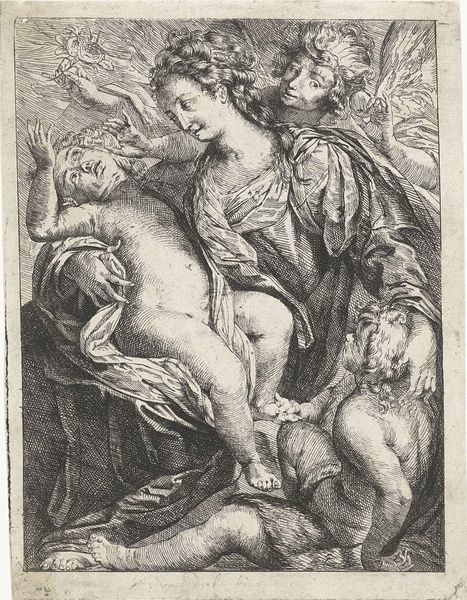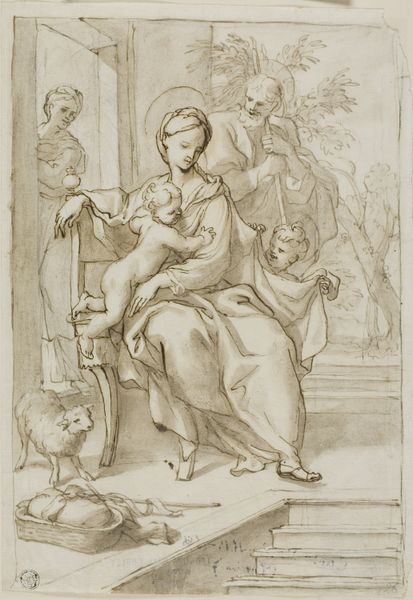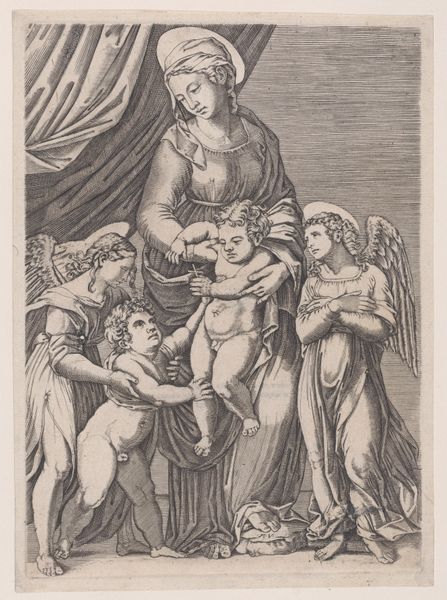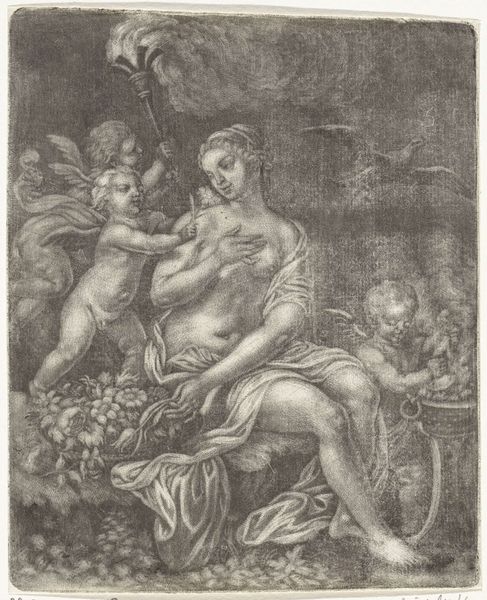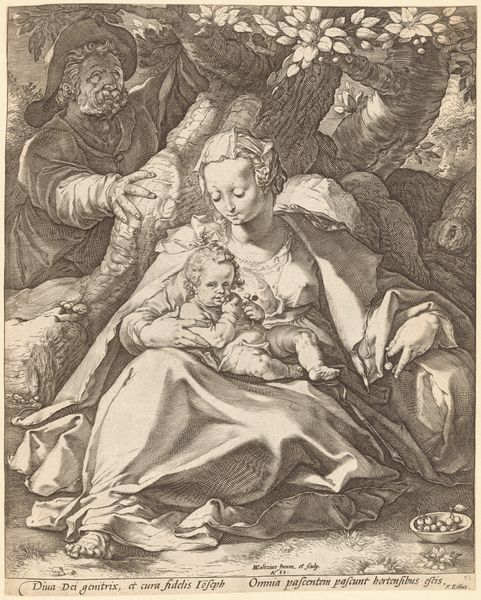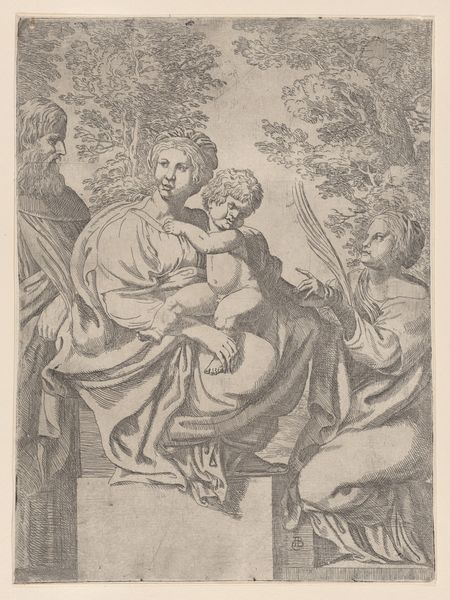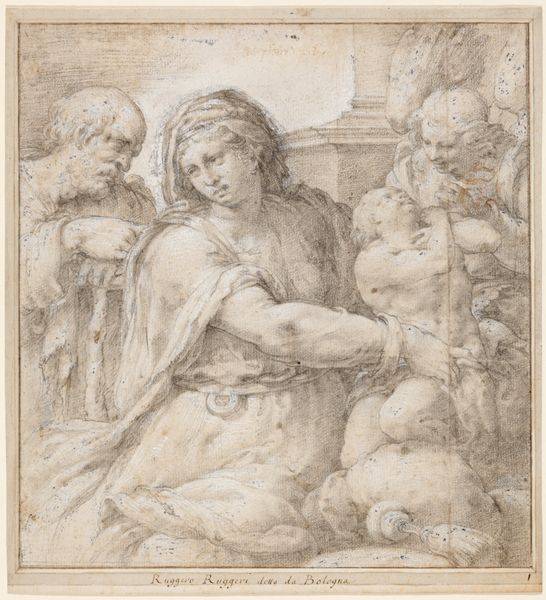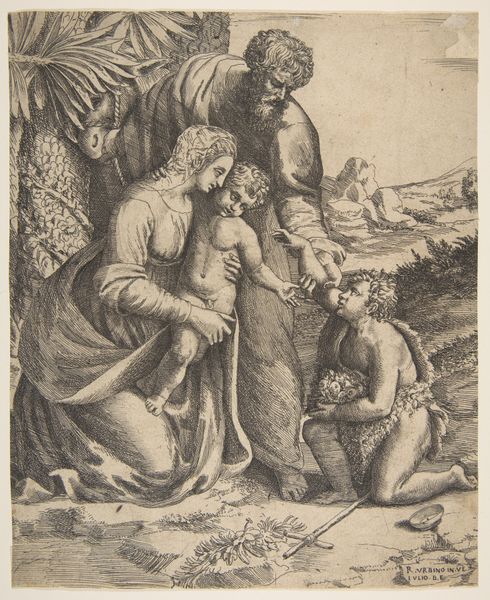
The Holy Family with St. Anne and St. Catherine 1542 - 1650
0:00
0:00
drawing, print, engraving
#
portrait
#
drawing
# print
#
caricature
#
mannerism
#
figuration
#
group-portraits
#
portrait drawing
#
history-painting
#
italian-renaissance
#
engraving
Dimensions: plate: 14 1/2 x 9 1/2 in. (36.8 x 24.2 cm)
Copyright: Public Domain
Curator: This is "The Holy Family with St. Anne and St. Catherine," an engraving executed sometime between 1542 and 1650, and currently housed at the Metropolitan Museum of Art. The print is by Enea Vico, after a design by another artist. Editor: My immediate impression is one of controlled elegance, though bordering on cold. The intricate linework, rendered entirely in monochrome, creates a tableau that’s technically masterful, but somewhat emotionally detached. The subjects feel more like statues than living beings. Curator: The engraving process itself is crucial here. Vico meticulously cuts lines into a metal plate, creating these tonal variations that attempt to simulate painting, requiring immense skill and time. These prints, like this one, democratized access to artistic masterpieces. How was it distributed, who bought them, and for what purposes? Editor: True, but look closely at the composition. See how the figures are arranged? It almost looks like a pyramid, anchoring the serene Mary at its apex. And the flowing lines of her robes—it’s almost sculptural in its effect, reminiscent of classical sculpture but with a touch of Mannerist elongation and affectation. It certainly speaks to an ideal, a form to be studied. Curator: Considering it’s after a design by another artist, we might be examining Vico's interpretation as much as the original artist's intentions. What materials were available, and what did patrons demand? The subject of the Holy Family resonated with religious audiences, certainly. Who were the intended consumers of Vico's work, and how did its availability intersect with religious and social reforms of the era? Editor: The subject certainly points towards an aspiration, yes, to faith and divine beauty. But that said, observe the rendering of the faces; their expressions feel…studied. The almost uniform smoothness and the detached gaze rob them of true individuality, it removes from human presence. It's an ideal that's achieved at the expense of emotion, creating an aesthetic experience but maybe limiting the work's spiritual depth? Curator: Yes, but those ideals also helped shape social values. Consider the societal impact: what was considered appropriate for women at that time, and how does Mary fit or defy those standards within the context of her labor and class? Did access to this kind of image affect viewers' perceptions and interactions? Editor: Fascinating points to consider, both offering very different views of the work in terms of faith and aesthetics.
Comments
No comments
Be the first to comment and join the conversation on the ultimate creative platform.
